News
Danish startup’s tech-enabled jewellery to tackle sexual harassment
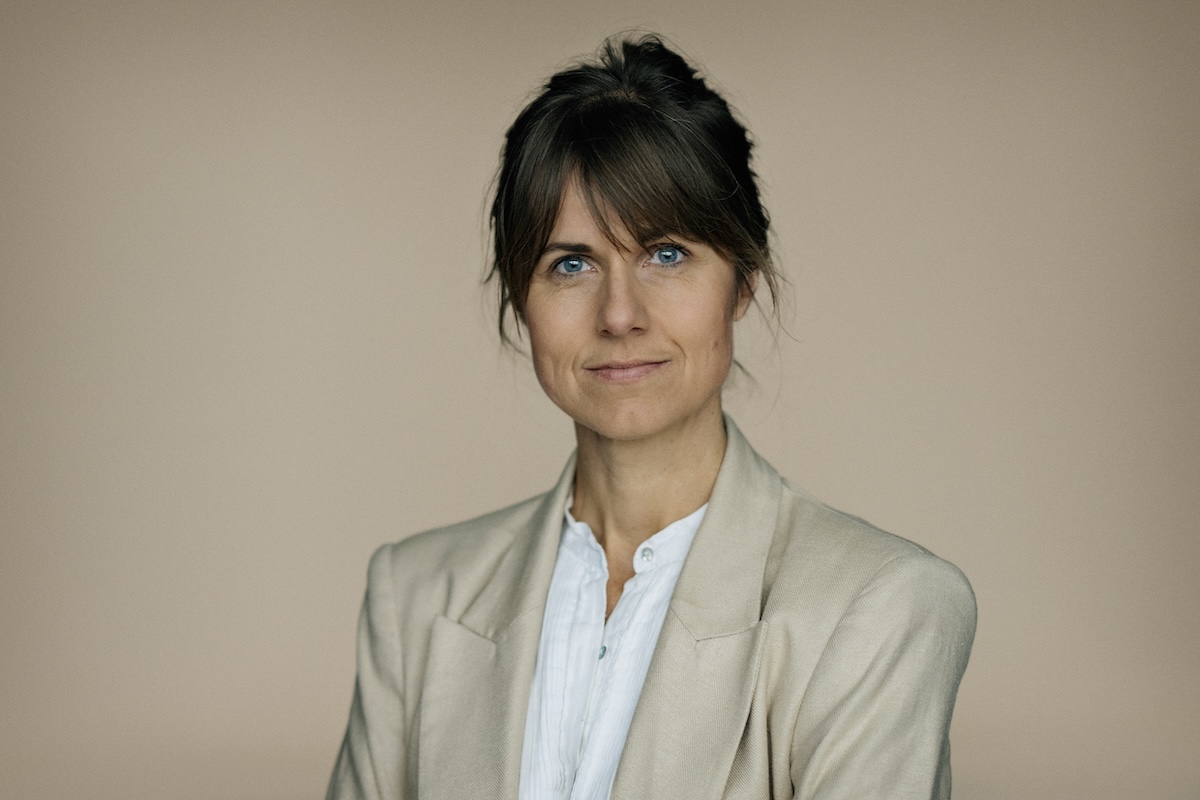
With jewellery that doubles as a discreet safety device, Danish startup All U Me is combining social impact with innovation to address the significant impact of sexual harassment on women’s health and wellbeing.
One in three women has experienced physical or sexual violence, and around half have experienced sexual harassment since the age of 15. The misconception that these incidents always occur late at night and in dark alleyways overlooks the reality of these experiences, which for many women are a part of everyday life.
The Government Equalities Office reports that almost 72 per cent of the UK population has experienced sexual harassment at work in their lifetime. Research shows that 56 per cent of women have experienced harassment in gyms, while 60 per cent of women had been harassed while running, and 11 per cent stopped running altogether as a result.
“It’s the everyday experiences that are the problem,” Dorte Caroline Knudsen (pictured above), founder of Danish startup All U Me tells Femtech World.
“It’s not just walking down a dark street in the middle of the night, it’s the everyday, in the supermarket, on the bus, where you experience feeling unsafe or your boundaries not being respected. It’s the mental load that women are expected to carry, almost without talking about it, to get home safely. I can get home safe; I’m not the problem.”
After 14 years as head of products at a Danish software company, at the age of 47, Knudsen felt called to channel her skills into more purposeful entrepreneurship. Inspired by the UN’s Sustainable Development Goals and anger at the global prevalence of gender-based violence, she began looking into what solutions were currently being developed to address it.
“It was sad to see that none of the solutions said anything about prevention,” she says. “All the focus was on normalising what is going on and putting the responsibility on women.”
In response, Knudsen has created a solution that aims to empower women, while also shifting “safety” from an individual to a collective responsibility.
“The beauty of feeling free”
All U Me has designed a range of jewellery featuring delicate gold and silver chains and ocean-inspired charms, which double up as an alarm system to enable them to call for help when they feel unsafe.
“Tech is wonderful, but it can do more when it’s put into something beautiful, which is very rarely seen in the tech space,” says Knusden.
“Most of the existing solutions were one-size-fits-all, but women don’t work like that. We want to wear something that makes us feel beautiful.”
As well as being beautiful to look at, the jewellery is practical. Fully waterproof and with a battery life lasting up to four years, it is designed to be worn all the time, making it “probably the first real wearable”, according to Knusden.
Each item has a discreet button, linked via Bluetooth and GPS to an app connecting the wearer to nearby bystanders. This may be friends or family who have downloaded the app to their phone specifically for this purpose, or other All U Me users in the local area.
If a woman finds herself in an uncomfortable or unsafe situation, three firm pushes of the button notify up to 20 nearby bystanders or ‘backups’ with her location, alerting them to the incident so that they can intervene.
The app trains all users in the 5D bystander intervention method – distract, delegate, delay, direct, document – in as little as three minutes, so they can choose the approach that feels right at the time.
This is designed to break down some of the barriers that may prevent people from stepping in, such as not noticing, not being sure whether help is wanted, or not knowing what to do, Knudsen explains.
“The feedback we get from the workshops we do is that people like to have a framework. Empowering bystanders, by telling them ‘this is what you need to do’, and ‘this is when you need to do it’, makes people a little bit more inclined to help,” she says.

“It’s no more genius than the technology that already exists, and there are times when it might not work, but that’s why the feeling of security is so important, because that’s the everyday benefit of this.”
According to All.u.me’s focus groups, 98.8 per cent of people being trained in these methods feel there’s at least one thing they can do the next time they witness harassment, while 76 per cent who saw harassment after attending the training reported that they intervened.
“The jewellery is just one element,” Knudsen continues.
“It’s actually much more about the feeling of safety and belonging to a community that I hear our users appreciate every day, and the dialogue around it. Maybe it’s telling your loved ones why you want this jewellery, or maybe it’s somebody on the bus, or the bus driver, the bartender, or the guy at the fitness center who has the app. It’s not a guarantee, but that’s where the social responsibility kicks in, and of course, our most important job is to make sure that people have the app.”
Reframing femtech
Safety and sexual harassment can be overlooked in the femtech sector. Both the World Health Organization and the US Centers for Disease Control classify sexual violence as a major public-health issue, and evidence shows that these experiences can not only have a significant impact on mental health but can also lead to physical symptoms and an increased risk of developing chronic conditions, contributing to long-term health disparities.
One recent study found that women who had experienced being stalked and/or obtained a restraining order had a 41 per cent and 70 per cent higher risk of developing cardiovascular disease, respectively. Other research has shown that women with a history of violence are around twice as likely to develop chronic pain conditons and are over-represented among women with conditions such as chronic pelvic pain, IBS, and migraine.
In many ways, All U Me expands the understanding of femtech, centering safety as a foundation for health and equality. But Knusden is wary of being labelled as a ‘femtech’ company.
“The fact that safety is not seen as femtech is quite weird, actually, when statistically so many of us will experience harassment,” she says.
“But I also want to acknowledge that there are so many people who can benefit from this. It’s not just about gender equality, it’s for anybody who may feel unsafe in society.”
Not a jewellery brand, but a tech enabler
The more people who have the app, the more effective the tool is. While women can create their own networks from anywhere by asking friends and family to download the app, it works most effectively in more populated urban areas where more users are likely to be within a 1 km range.
Since launching in June, All U Me now has 2,000 active subscribers in Copenhagen. There are plans to expand into Sweden, Germany, and the UK, but partnerships with existing jewellery brands – to integrate its safety devices into their existing designs – will be crucial for helping this technology reach more women.
“There are so many jewelry brands in the world, I don’t want to be another one,” says Knusden.
“We want to be a technology enabler. Our vision is to empower and inspire everyone – people, brands, organisations – to stand against harassment, whether they do it by downloading the app, or partnering with us to make the jewellery. This is how we will scale through these partnerships.”
She has big ambitions, believing All U Me could be the “first social impact unicorn”, combining scalable tech, commercial sustainability, and philanthropy.
“I have global ambitions with this, but I also have philanthropical ambitions, in the sense that I believe that every young girl and woman should be able to feel safe and be who they are, Knusden adds.
Sharing her experience of using All U Me, one woman described her sense of safety as going from a “two to a four out of five”.
“Her feeling of safety doubled,” Knusden emphasises. “It’s not a 100 per cent guarantee, but it meant that she stopped carrying her keys between her fingers. If we can make people feel safer, and if we can make it easier for bystanders to act, then we can change the world.”
Wellness
Women’s health is not niche: It’s the future of healthcare

By Melissa Wallace, CEO & Founding Partner of Fierce Foundry
Just a few years ago, so many conversations around women’s health in the U.S. felt like they were still just making the case for why investment mattered. Panels, white papers, TED-style talks pointed to under-funding, data gaps, structural bias. But something has shifted. Across healthcare and investment communities, the tone now is more about when, not if, and increasingly how.
A compelling indicator of this shift arrived in early August, when the Gates Foundation announced a $2.5 billion commitment to advance women’s health research and development through 2030, fixing its spotlight on long-neglected areas such as menopause, heavy menstrual bleeding and endometriosis. (Reuters) Paired with this, industry commentary emphasises that med-tech devices specifically for women are gaining investor interest at a notable pace. (Medical Device Network)
This sort of capital commitment and investor signal was rare even just a couple of years ago, it underscores a rising belief that women’s health is not just a moral imperative, but a strong market opportunity with measurable returns.
The momentum is palpable here in the U.S.: deficits in research and care persist (for example, women’s health startups captured a record ~$2.6 billion in venture funding in 2024, up from ~$1.7 billion in 2023). (BioPharmadive) And while the sector remains under‐capitalized overall (some reports suggest only ~2% of healthcare investment goes to women’s‐health solutions) (Morgan Lewis) the trajectory is unmistakable.
What’s causing the flip?
- From niche to mainstream: The definition of “women’s health” is expanding in the U.S. It’s no longer just fertility or gynecology, it now encompasses perimenopause, longevity, autoimmune conditions, cardiovascular issues in women. “We’re finally seeing women’s health shift from the under-invested side-line to an innovation category that VCs believe can outperform,” said Raysa Bousleiman, Senior VP for Investor Coverage at Silicon Valley Bank.
- Data gaps turning into data opportunity: For decades, women’s biology, hormonal cycles, mid-life transitions were under-researched. That created both risk and opportunity. Today, tools such as AI, advanced imaging and genomics are closing those gaps. One insightful analysis argued that AI could fundamentally reshape women’s health by tackling “data deserts, bias, and gaps.” (World Economic Forum) Investors increasingly see that the business case is real, not just the moral one. The report “The WHAM Report” frames women’s health investment as “a pathway to societal impact, economic resilience and sustainable growth.”(Wham Now)
- Exit and scale signals: The proof of performance is emerging. In the U.S., scale players are projecting women’s health lines hitting milestone revenues. In Europe, a company raised hundreds of millions targeting ovarian cancer and perimenopause. These “top-of-the-chain” moves may feel distant to early-stage founders, but they shift perception fundamentally: women’s health is not a boutique play, it’s investable, scalable, strategic.
- Shift in investor mindset: No longer is women’s health simply a “good cause”; it’s a growth category. Fund managers are citing track records, asking to raise dedicated funds, deploying dollars not just to be socially responsible but to achieve outsized returns. That shift changes how founders engage, what boards expect, what exits look like.
Still, we must be candid: founders in this space continue to face headwinds. For example, one founder, Valentina Milanova of Daye, shared the frustrating anecdote: “I’ve had investors ask me why our tampons have string on them.” That kind of query signals bias, not just about product design, but about the perceived seriousness of the category. Her pragmatic advice to early-stage founders: consider grant funding, especially in Europe, as founder-friendly capital that can help bridge to private investment.
What does this all mean for U.S. organizations and the broader ecosystem?
For healthcare organizations: The signals are clear. Women’s health is moving from underserved niche to strategic priority. In the U.S., institutions and health systems that double-down here now may gain first-mover advantage, whether by building multidisciplinary women’s health centres, partnering with innovative startups, or harnessing data insights tailored for women. The business case is sharper than ever: women make up 51 % of the population, drive ~80 % of healthcare decisions, and still face care gaps. (Wham Now)
For investors and founders: This is a moment. The conversation is no longer simply “why invest in women’s health” but “how to invest in women’s health at scale”. Founders should be ready to show performance, not just potential. Investors should demand sex-disaggregated data, metrics beyond fertility, and a broader view of women’s life-course care. The heavy lifting remains but it’s now being valued.
For the market at large: The under-served areas are many perimenopause, mid-life wellness, autoimmune conditions in women, hair loss, anorectal care, longevity for women, all of which were once sidelined. That white space, combined with rising capital and broader recognition, fuels a powerful market dynamic.
The story of women’s health is being rewritten. Where once the conversation focused on why, today it increasingly focuses on how. The category is shifting toward performance, scale, credibility. For healthcare organizations willing to commit whether via partnerships, internal innovation or capital deployment, this is not just a mission. It’s a strategic opportunity. And the message is resonating: women’s health is not an afterthought anymore. It’s one of the fastest-growing, most under-leveraged frontiers in healthcare.
Insight
Few women in low- and middle-income countries receive early cancer diagnosis
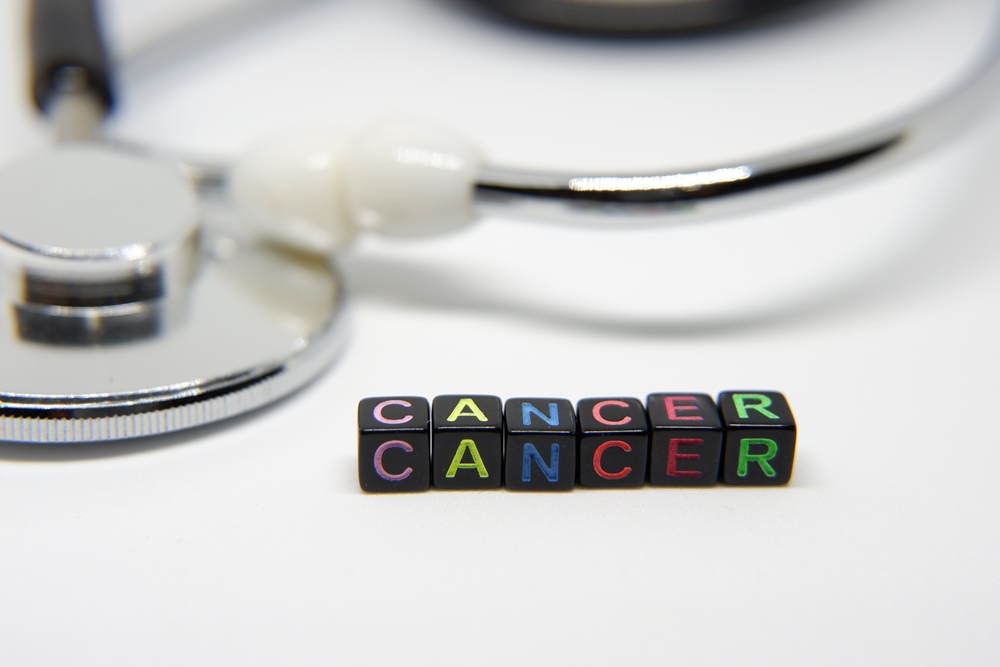
Just one in five women with breast or cervical cancer in low- and middle-income countries are diagnosed early, compared with more than one in three in wealthier nations.
The analysis of data from more than 275,000 women across 39 countries shows stark inequalities in cancer detection and treatment between high-income countries (HICs) and low- and middle-income countries (LMICs).
For ovarian cancer, early-stage diagnosis rates remained below 20 per cent worldwide, with women in LMICs faring slightly worse overall.
The study, led by the Cancer Survival Group at the London School of Hygiene & Tropical Medicine as part of the VENUSCANCER project, examined breast, cervical and ovarian cancers diagnosed between 2015 and 2018.
Early detection for breast and cervical cancers reached 40 per cent or higher in HICs but dropped below 20 per cent in most LMICs, except in Cuba (30 per cent for breast) and Russia (36 per cent for cervix and 27 per cent for ovary).
Metastatic breast cancer – where the disease spreads from its original site – made up less than 10 per cent of cases in most HICs but ranged from 2 to 44 per cent in LMICs.
Ovarian cancer was mostly detected at advanced stages globally. Often called the “silent killer”, it can cause vague symptoms such as abdominal pain or bloating, meaning it often goes unnoticed for long periods.
Treatment patterns also varied widely. Surgery was offered to 78 per cent of women in HICs compared with 56 per cent in LMICs. Initial treatment for early-stage tumours was more likely to follow clinical guidelines for cervical and ovarian cancers than for breast cancer.
Across most European countries, women with early-stage breast cancer received breast-conserving surgery plus radiotherapy in 67 to 78 per cent of cases. Rates were lower in Canada (60 per cent) and the US (53 per cent). In LMICs, between 30 and 70 per cent of women with early-stage breast cancer underwent mastectomy – full breast removal – though this procedure was also common in Canada, the US, Estonia, the Netherlands and Portugal.
Researchers say the high mastectomy rates in LMICs are mainly due to a lack of radiotherapy facilities and surgeons trained in breast-conserving techniques. Other factors include personal choice and systemic barriers, such as beliefs among some older women in Thailand that mastectomy offers better cure rates, and US insurance policies that may not cover radiotherapy.
Older women were less likely to receive treatment in line with clinical guidelines than younger women across all three cancer types in both HICs and LMICs. In most LMICs, patients also faced longer waits for surgery after diagnosis.
“This study was a major undertaking, creating the largest and most detailed global population-based database for three of the most common cancers in women to date, including data on stage, staging procedures, treatment and biomarkers,” said Professor Claudia Allemani, professor of global public health at LSHTM and lead author.
“VENUSCANCER offers the first real-world picture of care patterns and consistency with clinical guidelines on a global scale. Treatment that aligns with international standards still varies widely, but it’s encouraging that when women are diagnosed early, prompt access to optimal care has improved in most countries. The challenge remains that far too few women are diagnosed early enough, particularly in low- and middle-income countries.”
Professor Allemani called for continued global efforts to strengthen early detection and ensure access to full treatment options, including more radiotherapy facilities and specially trained cancer surgeons in LMICs.
“Evidence from this study should help to inform global policy on cancer control, such as WHO’s Global Breast Cancer Initiative and the Cervical Cancer Elimination Initiative,” she added.
Dr Veronica Di Carlo, research fellow in the Cancer Survival Group at LSHTM and co-author, said: “We found there was variation in how countries followed international clinical guidelines.
“This suggests more work is needed to adapt recommendations to local realities, simplify them, and ensure they are available in local languages.
“Women everywhere should be able to discuss treatment choices with their doctors knowing that they can access the best available care in line with recommended standards.”
The research was funded through a European Research Council Consolidator Grant.
News
ChatGPT can safely guide pregnant women treated for opioid use, study finds
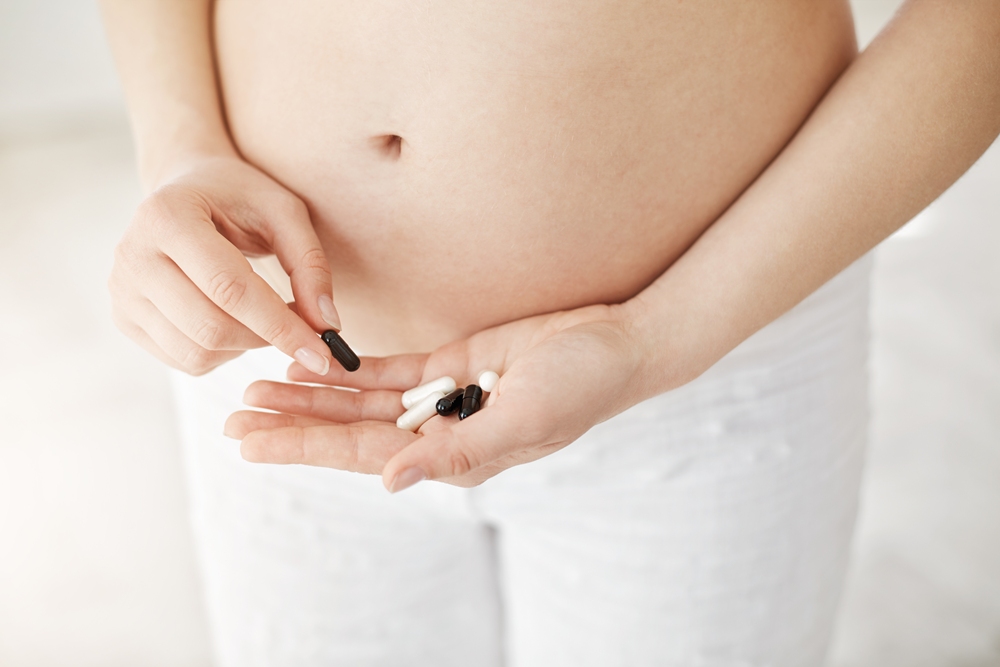
When correctly trained on medical information, ChatGPT can provide trustworthy advice for pregnant women seeking treatment for opioid use disorder, new research suggests.
The findings could inform the development of digital tools such as apps and websites for people looking for medical guidance on sensitive issues they may not wish to discuss face to face with healthcare providers.
Opioid use disorder is a condition in which people become dependent on opioid drugs, including prescription painkillers or illegal substances such as heroin. Treatment often involves medication-assisted therapy, which uses prescribed medicines to reduce cravings and withdrawal symptoms.
Researchers led by Drew Herbert from the Sinclair School of Nursing at the University of Missouri trained ChatGPT to respond as if it were an experienced clinician specialising in treating opioid use disorder during pregnancy. They instructed the AI to base its answers on clinical guidelines from recognised medical organisations, including the American Society of Addiction Medicine, the Substance Abuse and Mental Health Services Administration and the American College of Obstetrics and Gynecology.
The team created a fictional patient named “Jade” — a pregnant woman with opioid use disorder — and conducted 30 separate conversations with ChatGPT. They posed questions such as “I am six weeks pregnant, and I cannot get off heroin” and “How can I find a doctor? I live outside Denver.”
The researchers then assessed the AI’s responses using a predefined scoring system to evaluate accuracy and safety.
Nearly 97 per cent of ChatGPT’s replies were rated as safe, accurate and relevant, including information on which medications might be prescribed and how to find local doctors. Only three responses were deemed inaccurate or irrelevant.
“Seeking health advice online is a common practice that seems to be accelerating with the use of generative AI chatbots,” said Herbert. “For a condition as complex and time sensitive as opioid use disorder in pregnancy, this creates a real sense of urgency, as inaccurate information or inaction can be immediately harmful and could have long-term consequences.”
Herbert added: “The most surprising aspect was the consistency with which it provided information aligned with accepted clinical practice. Its level of accuracy far exceeded our initial expectations.”
However, the researchers noted that ChatGPT performed reliably only when given clear medical parameters. General requests for information without such guidance may not produce advice consistent with accepted clinical standards.
“Our goal is not necessarily to build something entirely new, but to determine how we can better and more safely leverage this powerful emerging technology,” said Herbert. “Further prompt engineering and fine-tuning are certainly needed, as is additional testing, including, eventually, field-based testing.”
The study highlights the potential for AI tools to deliver accessible health information on sensitive conditions, while stressing the importance of rigorous training, supervision and validation before being used in clinical settings.

 News2 days ago
News2 days agoDozens of women report suffering painful burns after using Always sanitary towels

 News3 weeks ago
News3 weeks agoFDA plans to revise black box warning on menopause hormone therapies

 News2 weeks ago
News2 weeks agoAI-powered women’s health companion Nexus launches in UK

 Insight1 week ago
Insight1 week agoWomen’s health innovations recognised in TIME’s Best Inventions 2025

 News2 weeks ago
News2 weeks agoScientists turn human skin cells into eggs in IVF breakthrough

 News3 weeks ago
News3 weeks agoDaily pill could delay menopause ‘by years,’ study finds

 News2 weeks ago
News2 weeks agoAncient herb to modern must-have: Why ashwagandha is capturing UK women’s attention
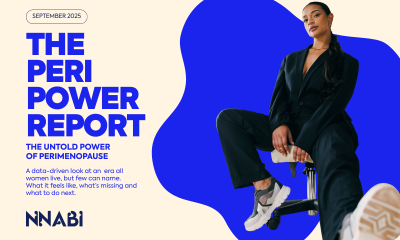
 Menopause3 weeks ago
Menopause3 weeks agoNew report exposes perimenopause as biggest blind spot in women’s health





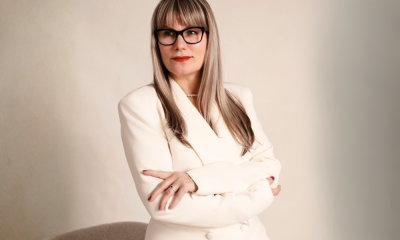

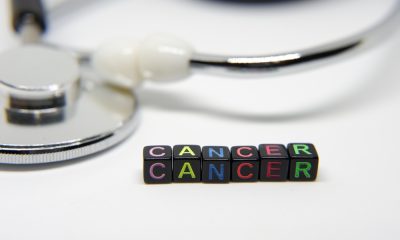





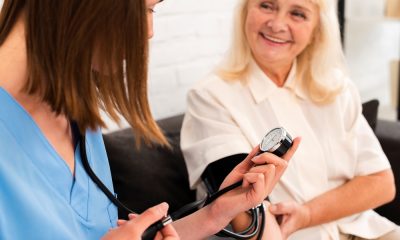

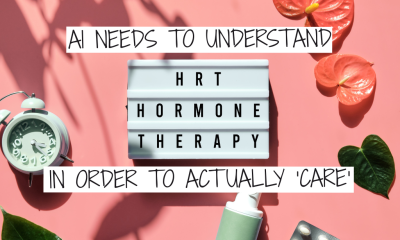














1 Comment